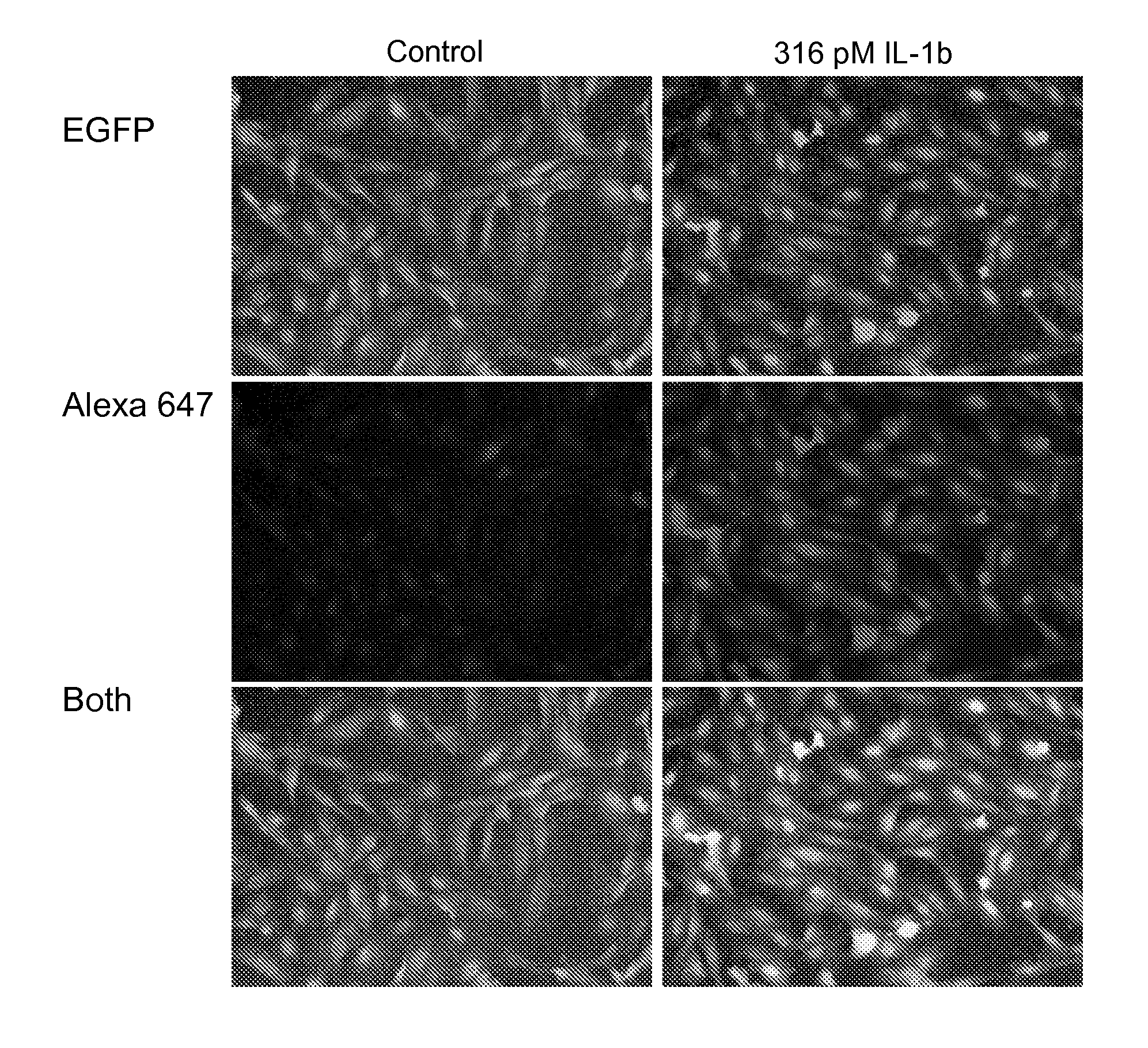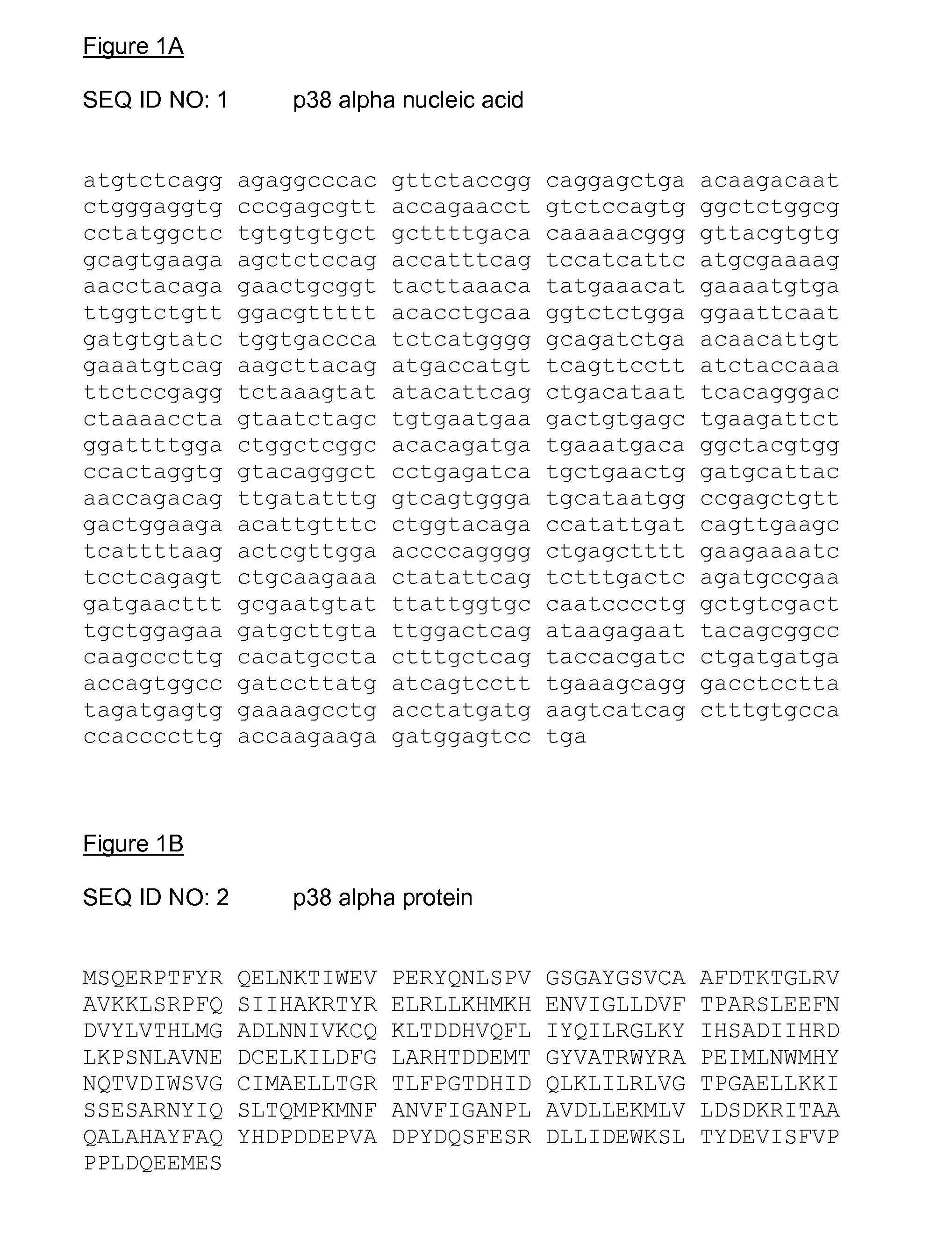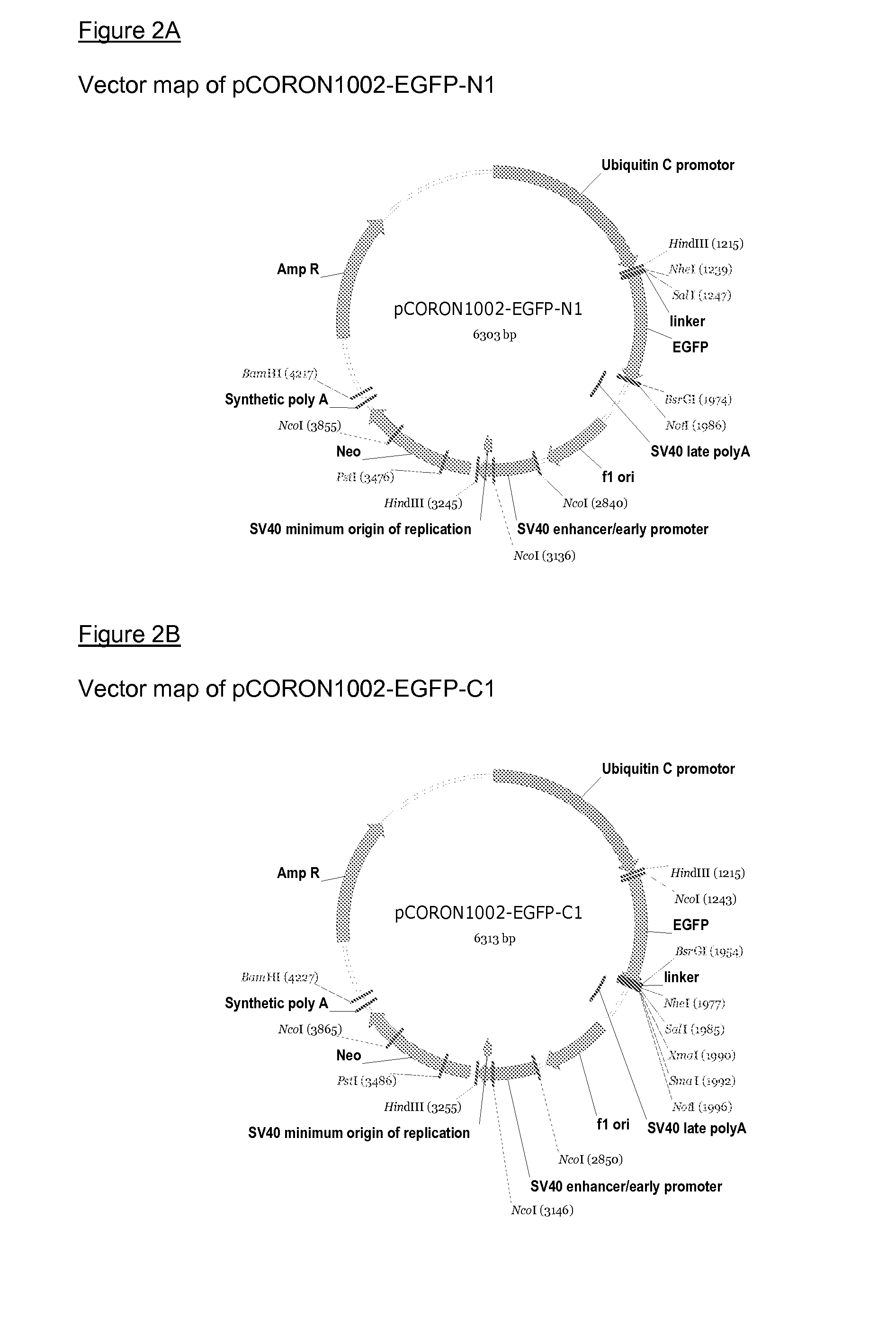Signalling Assay and Cell Line
a signaling assay and cell line technology, applied in the field of sensors, can solve the problems of inability to conduct live cells in real time, inability to detect false positives in direct assays, and inability to homogeneous direct immunofluorescence assays, etc., to inhibit the activation of p38
- Summary
- Abstract
- Description
- Claims
- Application Information
AI Technical Summary
Benefits of technology
Problems solved by technology
Method used
Image
Examples
Embodiment Construction
Generation of MAPK14-reporter Gene Vectors
[0110]The gene corresponding to p38alpha MAPK14 variant 2 was obtained from the Mammalian Gene Collection (clone 5181064; GenBank BC031574; SEQ ID NO: 1, FIG. 1). SEQ ID NO: 2 shows the protein sequence encoded by SEQ ID NO: 1. PCR primers were designed to amplify the whole MAPK14 gene and permit the products to be subcloned as N-terminal or C-terminal fusions in plasmid vectors pCORON1002-EGFP-N1 and pCORON1002-EGFP-C1 (GE Healthcare, Amersham, UK; FIGS. 2a and 2b) or adenoviral vectors pDC515-UBC-Emerald-N1 and pDC515-UBC-Emerald-C1 (Microbix Biosystems Inc., Toronto, Calif.; FIGS. 3a and 3b). Introduction of a NheI restriction enzyme site at the 5′ end and XhoI restriction enzyme site at the 3′ end of the MAPK14 fragment allowed sub-cloning into NheI and SalI restriction sites in the vectors. The pCORON1002 vectors contain a bacterial ampicillin resistance gene and a mammalian neomycin resistance gene to facilitate stable cell line produc...
PUM
| Property | Measurement | Unit |
|---|---|---|
| Fluorescence | aaaaa | aaaaa |
| Luminescence | aaaaa | aaaaa |
Abstract
Description
Claims
Application Information
 Login to View More
Login to View More - R&D
- Intellectual Property
- Life Sciences
- Materials
- Tech Scout
- Unparalleled Data Quality
- Higher Quality Content
- 60% Fewer Hallucinations
Browse by: Latest US Patents, China's latest patents, Technical Efficacy Thesaurus, Application Domain, Technology Topic, Popular Technical Reports.
© 2025 PatSnap. All rights reserved.Legal|Privacy policy|Modern Slavery Act Transparency Statement|Sitemap|About US| Contact US: help@patsnap.com



